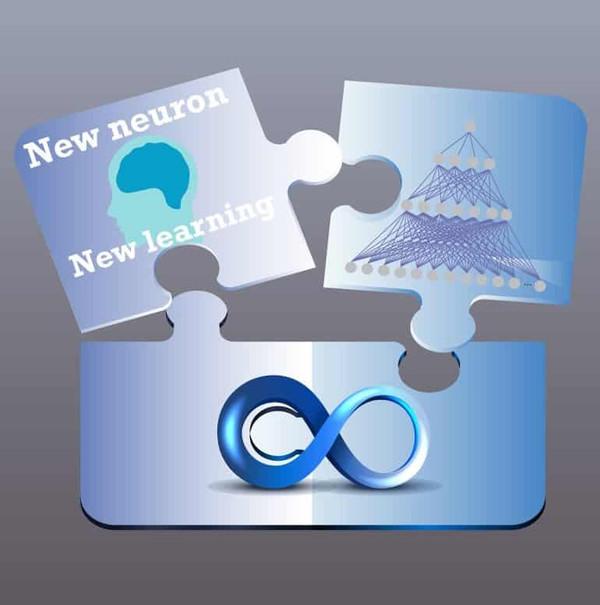New Brain Learning Mechanism Calls for Revision of Long-Held Neuroscience Hypothesis - Neuroscience News
Curated from: neurosciencenews.com
Ideas, facts & insights covering these topics:
7 ideas
·2.46K reads
27
2
Explore the World's Best Ideas
Join today and uncover 100+ curated journeys from 50+ topics. Unlock access to our mobile app with extensive features.
New Neuron New Learning
Experimental observations conclude learning is mainly performed by neural dendrite trees as opposed to modifying solely through the strength of the synapses, as previously believed.
The brain is a complex network containing billions of neurons. Each of these neurons communicates simultaneously with thousands of others via their synapses (links), and collects incoming signals through several extremely long, branched “arms,” called dendritic trees.
Source: Bar-Ilan University
53
589 reads
How The Brain Learns
For the last 70 years a core hypothesis of neuroscience has been that brain learning occurs by modifying the strength of the synapses, following the relative firing activity of connecting neurons.
This hypothesis has been the basis for machine and deep learning algorithms which increasingly affect most of all our lives. After decades, this long-lasting hypothesis has now been called into question.
In an article published today in Scientific Reports, researchers from Bar-Ilan University in Israel reveal that the brain learns completely differently than has been assumed since the 20th century.
52
424 reads
Neuronal Dendritic Trees
The new experimental observations suggest that learning is mainly performed in neuronal dendritic trees, where the trunk and branches of the tree modify their strength, as opposed to modifying solely the strength of the synapses (dendritic leaves), as was previously thought.
These observations indicate that the neuron is a much more complex, dynamic and computational element than a binary element that can fire or not.
Just one single neuron can realize deep learning algorithms, which previously required an artificial complex network consisting of thousands of connected neurons and synapses.
50
340 reads
Prof. Ido Kanter
“We’ve shown that efficient learning on dendritic trees of a single neuron can artificially achieve success rates approaching unity for handwritten digit recognition. This finding paves the way for an efficient biologically inspired new type of AI hardware and algorithms,” said Prof. Ido Kanter, of Bar-Ilan’s Department of Physics and Gonda (Goldschmied) Multidisciplinary Brain Research Center, who led the research.
50
294 reads
Simplified Learning Mechanism
“This simplified learning mechanism represents a step towards a plausible biological realization of backpropagation algorithms, which are currently the central technique in AI,” added Shiri Hodassman, a Ph.D. student and one of the key contributors to this work.
The efficient learning on dendritic trees is based on Kanter and his research team’s experimental evidence for sub-dendritic adaptation using neuronal cultures, together with other anisotropic properties of neurons, like different spike waveforms, refractory periods and maximal transmission rates.
49
269 reads
The Sky is the Limit.
The brain’s clock is a billion times slower than existing parallel GPUs, but with comparable success rates in many perceptual tasks.
The new demonstration of efficient learning on dendritic trees calls for new approaches in brain research, as well as for the generation of counterpart hardware aiming to implement advanced AI algorithms. If one can implement slow brain dynamics on ultrafast computers, the sky is the limit.
50
302 reads
Bar-Ilan University
About this neuroscience and learning research news
Author: Press Office
Source: Bar-Ilan University
Contact: Press Office – Bar-Ilan University
Image: The image is credited to Bar-Ilan University
Original Research: Open access.
“Efficient dendritic learning as an alternative to synaptic plasticity hypothesis” by Shiri Hodassman et al. Scientific Report
51
247 reads
IDEAS CURATED BY
Antonio Gallo's ideas are part of this journey:
Learn more about scienceandnature with this collection
How to overcome unwanted thoughts
How to manage intrusive thoughts
How to change your attitude towards intrusive thoughts
Related collections
Similar ideas
2 ideas
How Neuroplasticity Changes the Brain
home.hellodriven.com
12 ideas
What is Neuroplasticity? A Psychologist Explains
positivepsychology.com
9 ideas
Exercise and the Brain: The Neuroscience of Fitness Explored
neurosciencenews.com
Read & Learn
20x Faster
without
deepstash
with
deepstash
with
deepstash
Personalized microlearning
—
100+ Learning Journeys
—
Access to 200,000+ ideas
—
Access to the mobile app
—
Unlimited idea saving
—
—
Unlimited history
—
—
Unlimited listening to ideas
—
—
Downloading & offline access
—
—
Supercharge your mind with one idea per day
Enter your email and spend 1 minute every day to learn something new.
I agree to receive email updates

